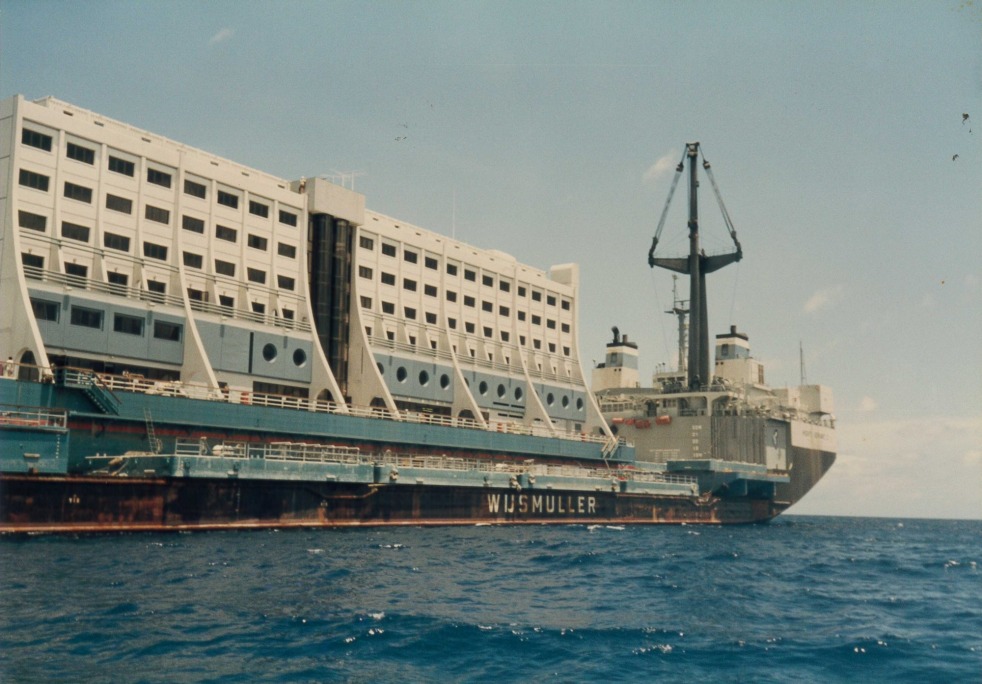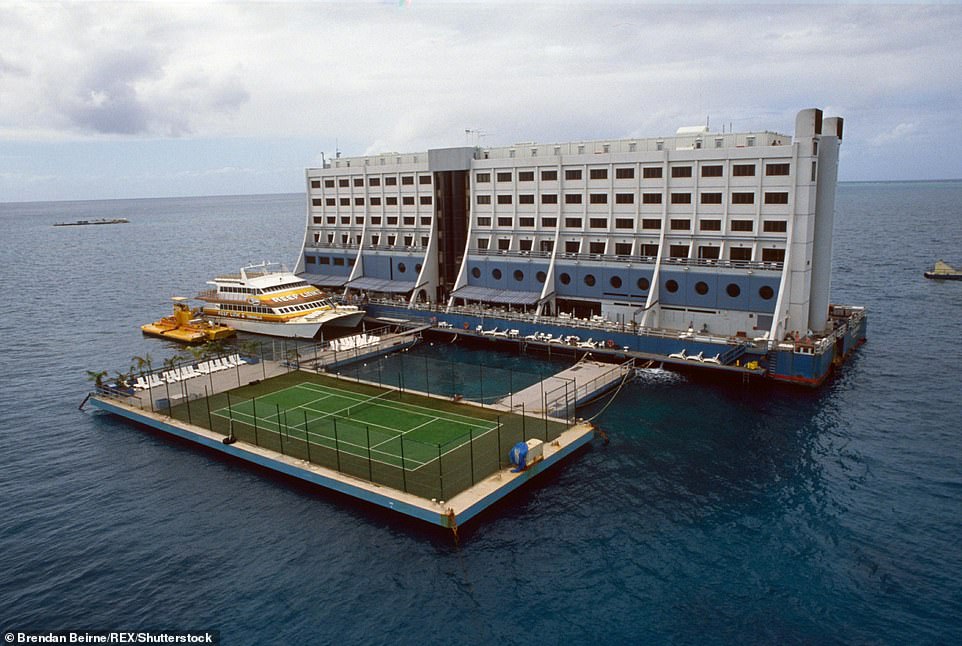The Australian Floating Hotel That Ended Up in North Korea
For little more than a year in the late 1980s, a seven-story five-star hotel floated over John Brewer Reef, about 70 km off the coast of Townsville, in Queensland, Australia. It had two hundred rooms, discos, bars, a gym, a sauna, and two excellent restaurants, specializing in seafood. Outside the hotel, a tennis court floated. It was such a novel enterprise that many Townsville residents old enough to remember the hotel still have fond memories of it.

The Four Seasons Barrier Reef Resort was the brainchild of Townsville developer Doug Tarca, who wanted to put a hotel on the Great Barrier Reef so that tourists could have immediate access to it. The original plan was to permanently moor three cruise ships around the reef, but this was deemed impractical. A chance encounter with a Swedish company who specialized in building floating dorms for oil rigs transformed that idea into a floating resort instead.
The hotel was constructed by a Singapore-based firm, and because it was to be placed at an environmentally sensitive location, the hotel had to incorporate many features that measure up to the strict standards of the Great Barrier Reef Marine Park. No toxic paint was used on the hull. No waste was discharged into the surrounding waters. Sewage and all liquid waste were treated and the resulting sterilized water was dumped several miles outside the reef. Trash was incinerated and garbage was taken to the mainland.
The hotel was completed in 1987 at the cost of USD 40 million. But a contract dispute with the Singapore shipbuilder delayed delivery until January the next year. Then it was struck by a cyclone, which delayed opening of the hotel by another two months. When it finally opened in March, the hotel had missed the lucrative Northern Hemisphere winter tourist market. The delays had cost millions of dollars in lost revenue.

The most difficult part, for the tourists, was the 70-kilometer-ride on water taxis to the hotel in the middle of the ocean. Rough weather often disrupted connections to the mainland, and when tourists did arrive, they were often seasick. Then one of the catamarans used to shuttle guests and supplies between the hotel and mainland caught fire. Although no one was hurt, it had a negative affect on the hotel’s public image. Combine that with poor marketing and poor management, and bookings began to dry up. Eventually the hotel became too costly to operate.
A little over a year after it was opened, the floating hotel was sold to a company in Vietnam. In 1989, it was towed to Saigon, 5,000 kilometers away, and moored on the Saigon River, where it opened as the Saigon Floating Hotel.
Vietnam was going through a tourism boom following the end of the Vietnam War, and there was much need for luxury accommodations. The floating hotel was the perfect overnight solution, and it worked. The hotel became very popular in the city, where it was fondly referred to as “The Floater”. But once again financial troubles forced the owners to close down the business.

The Saigon Floating Hotel moored on the banks of the Saigon River in Ho Chi Minh City, Vietnam.
This time the hotel was sold to North Korea and taken to the Mount Kumgang Tourist Region on the border between North and South Korea, which opened in 1998 for tourists from the south. It was renamed Sea Kumgang Hotel, or Hotel Haegumgang. Ten years later, when a North Korean soldier accidentally shot dead a South Korean woman, tours to the resort were suspended.
Hotel Haegumgang is still moored in its place, but has been closed for more than 10 years now. News of the hotel surfaced recently after the North Korean leader made some unflattering remarks after a visit to the ailing vessel. Mr. Kim made it clear that he was not pleased by what he saw at the resort, likening the facilities to “makeshift tents in a disaster-stricken area”.
Kim Jong-un ordered that all “backward” and “shabby” facilities be removed from the Mount Kumgang tourist resort, hinting that the 30-year-old floating hotel could either be rebuilt, scraped or sold to another developer.

The floating hotel being transported to its destination. In 30 years, the hotel has travelled more than 14,000 km.
Back in Townsville, people are still nostalgic about the hotel.
Belinda O'Connor, who worked on a water taxi that ferried guests out to the hotel, still remembers the first time she saw the hotel.
“It was an impressive sight. I remember so many amazing days living on the hotel, fishing trips, crew parties, diving under the hotel, having pizzas flown out by chopper,” she told ABC.
Another ex-employee of the hotel, Luke Stein, remembers fondly: “It was, and still is, the best job I have ever worked in my life. I got paid to walk, swim and be in the sun. I look back to those times and think: 'Did that really happen? Am I dreaming?”
The Townsville Maritime Museum now houses a popular exhibition about the hotel with a scale model of the vessel, information and memorabilia.

The model of the floating hotel at Townsville Maritime Museum.

The Australian Floating Hotel That Ended Up in North Korea
 Reviewed by Your Destination
on
January 05, 2020
Rating:
Reviewed by Your Destination
on
January 05, 2020
Rating:
 Reviewed by Your Destination
on
January 05, 2020
Rating:
Reviewed by Your Destination
on
January 05, 2020
Rating:
No comments